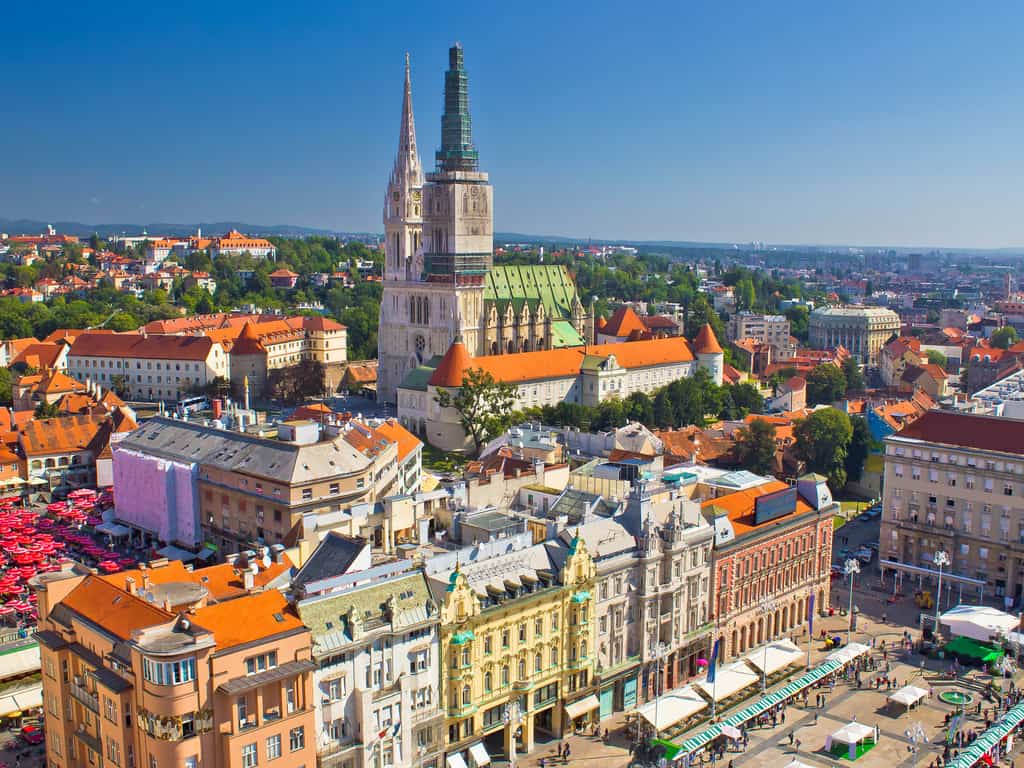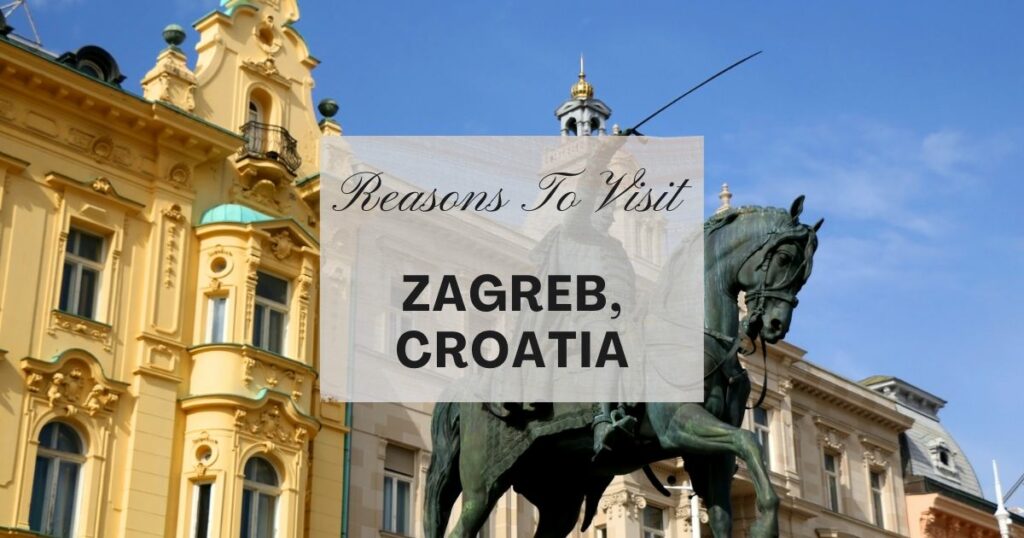Arranging a trip to Zagreb, Croatia? Check out our curated list of the best things to do in Zagreb, Croatia, and the best places to visit in Zagreb, Croatia, below. As a Web 3.0 travel startup, Wondrous Drifter aspires to make a huge impact on the world.
Table Of Content
- Archeological and Ethnographic Museum
- Art Pavilion and the Mestrovic Gallery (Umjetnicki Paviljon)
- Croatian Museum of Naïve Art (Hrvatski Muzej Naivne Umjetnosti)
- Croatian National Theatre (Hrvatsko Narodno Kazaliste)
- Dolac Market
- Lotrščak Tower (Kula Lotrscak) & Gric Cannon
- Lower Town (Donji Grad)
- Maksimir Park (Maksimirska)
- Mirogoj Cemetery
- Museum of Broken Relationships
- Museum of Contemporary Art (Muzej suvremene umjetnosti)
- Museum of Mimara (Muzej Mimara)
- St. Catherine’s Church
- Stone Gate, Porta di Pietra – Zagreb Shrine
- Strossmayer Promenade
- The City Museum (Muzej Grada Zagreba)
- The Modern Gallery (Moderna Galerija)
- Upper Town (Gornji Grad)
- Zagreb Botanical Garden (Botanicki Vrt)
- Zagreb Cathedral of the Assumption of the Blessed Virgin Mary
- Zagreb Funicular
- Zrinjevac Park
Archeological and Ethnographic Museum
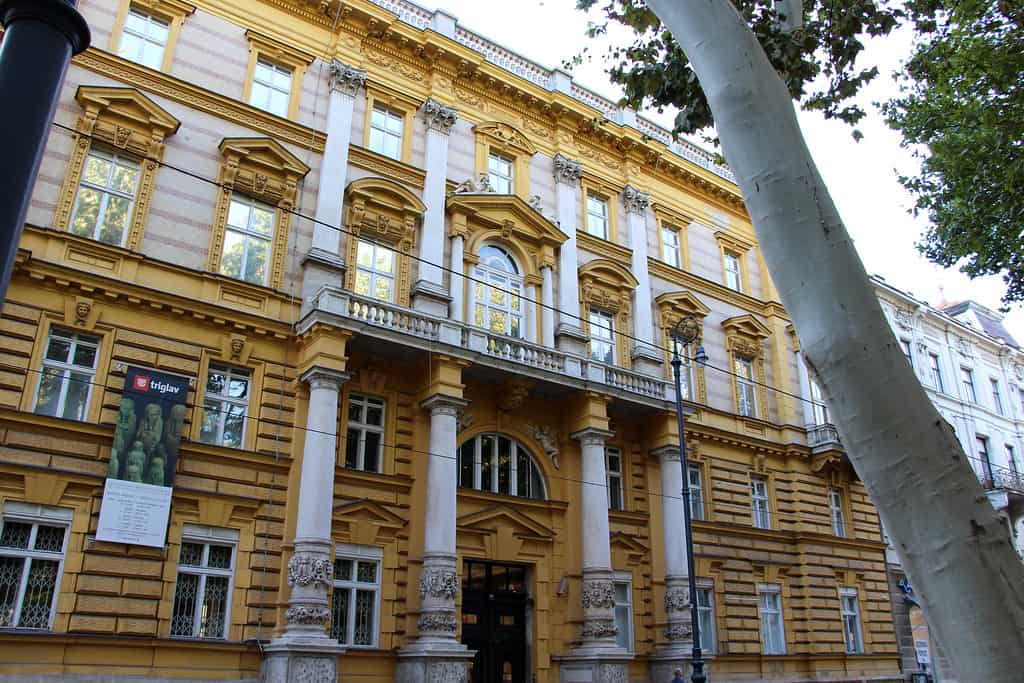
The best introduction to history is through a museum.
An Archeological and Ethnographic Museum is dedicated to the history of Croatia.
There are five main collections at the Archeological Museum in Zagreb containing some 400,000 pieces, many of which are from the region.
Particularly fascinating are the museum’s displays, including the Mummy of Zagreb, Greek vases, and an area focusing on the Great Migrations of the Peoples in Medieval times.
The Head of Plautilla from the ancient town of Salona is one of the essential pieces in the collection.
It also includes an extensive collection of coins from various periods, including Greek, Celtic, Roman, Byzantine, and modern.
The Ethnographic Museum (Etnografski Muzej) has an extensive collection of artifacts, including ceramics, jewelry, gold, musical instruments, textiles, tools, weapons, and elaborate costumes, that show the cultural history of Croatia.
The country’s regional diversity is evident in its traditional folk costumes, which come in many different colors and styles.
Don’t miss out on these extraordinary artifacts and have a visit!
Address: Zrinjevac 19, 10000, Zagreb, Croatia
Art Pavilion and the Mestrovic Gallery (Umjetnicki Paviljon)
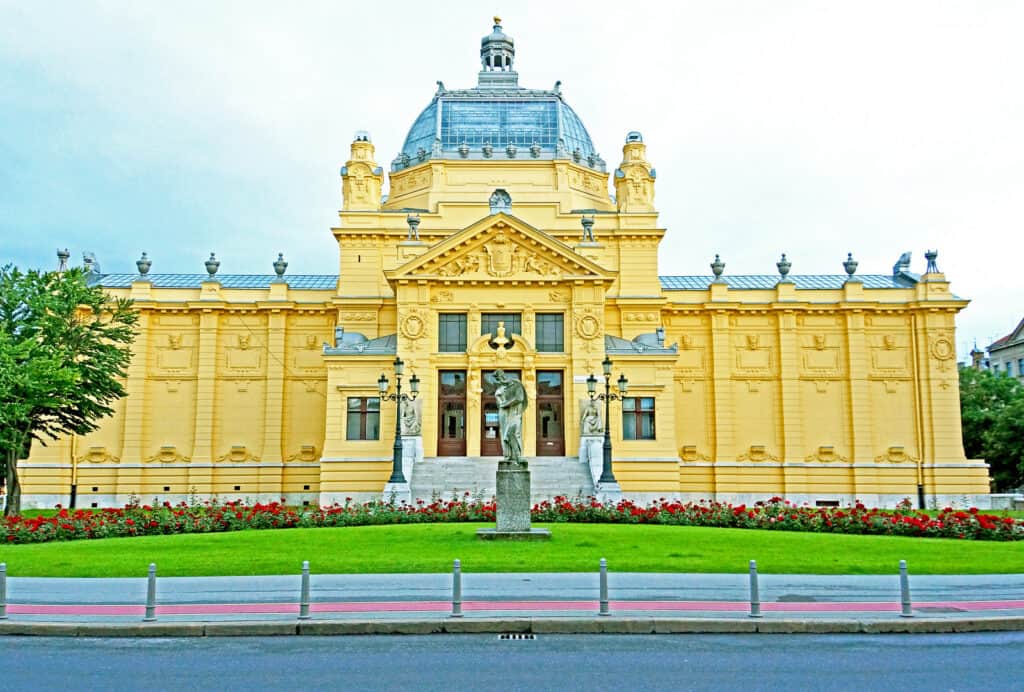
Art is too important not to share!
The original iron framework of Zagreb’s Art Pavilion (Umjetnicki Paviljon) was built for the international exhibition in Budapest in 1896.
It was transported and reconstructed in its current location.
The Art Pavilion’s bright yellow Art Nouveau exterior has become a popular venue for contemporary art exhibitions.
It houses many notable works by Croatian artist Ivan Mestrovic.
In Paris, Mestrovic became close friends with Auguste Rodin, the most famous Croatian artist of the 20th century.
One of his most famous works, Pieta Romana, is displayed in the Vatican.
Exhibitions include various artifacts from sculptures to drawings and even furniture and lithographs covering a wide range of subject matter.
The gallery specializes in solo and group exhibitions featuring works by artists from different periods and styles and from Croatia and abroad. This results in the museum not having a permanent collection to show visitors.
Check out the fantastic artwork on display in the world’s oldest exhibition hall!
Address: Trg Kralja Tomislava 22, 10000, Zagreb, Croatia
Croatian Museum of Naïve Art (Hrvatski Muzej Naivne Umjetnosti)
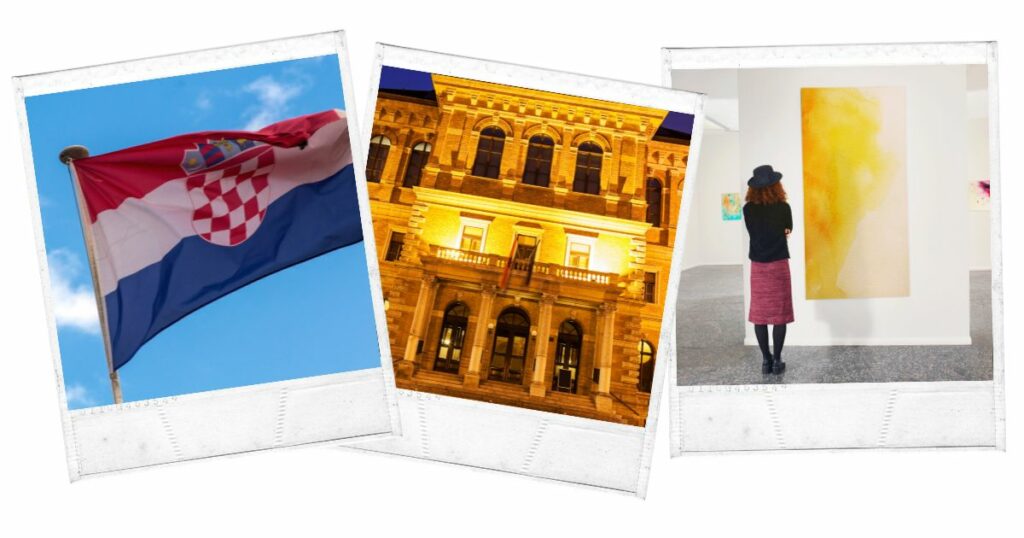
For the first time in history, a museum was dedicated to the naive art of Croatia.
After the first generation of naive Croatian artists had established their reputations and made significant achievements, the Croatian Naive Art Society was founded in 1952.
The Croatian Museum of Naive Art has a unique collection of artifacts.
The museum’s collection includes various styles and subjects with over a thousand artworks, mostly from Croatian artists and well-known international artists.
They include works by Ivan Generalic, Mraz, Mirko Virius, and Smaljic. Also on display are works of “primitive” art by international artists, which are similar in style.
The term “naive art” is misleading, as the style was popular in Croatia and worldwide during the 1960s and 1970s.
It’s a term used to describe a style of art with a dreamlike quality and a lot of vibrant colors, but it’s less common these days.
Visit a multi-range arts style at the Croatian Museum of Naïve Art now!
Address: Ćirilometodska ul. 3, 10000, Zagreb, Croatia
Croatian National Theatre (Hrvatsko Narodno Kazaliste)
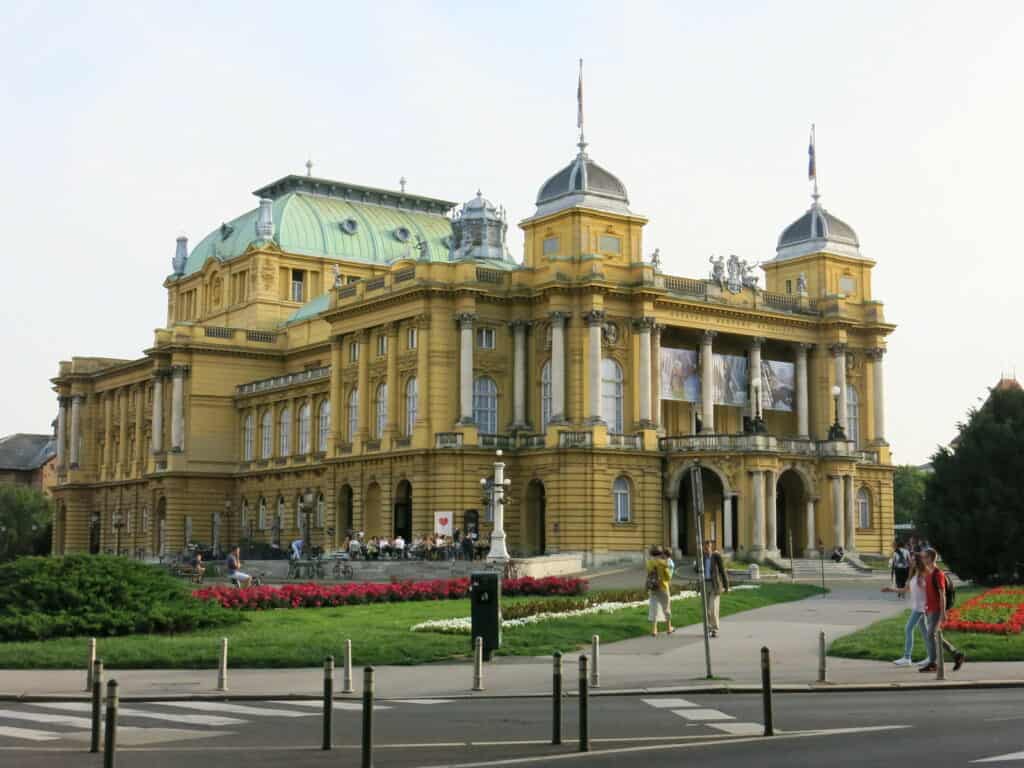
Have you ever attended a play? If not, make your first unforgettable experience here!
The Croatian National Theatre (Hrvatsko Narodno Kazaliste) is located in Donji Grad, on the northwest corner of Zagreb’s “Green Horseshoe,” designed by Austrian architects Hermann Helmer and Ferdinand Fellner.
Franz Joseph I of Austria-Hungary inaugurated the building in Trg Marsala in 1894. It has since become a landmark in the city’s Lower Town.
The theatre has been where many of Croatia’s best-known artists have worked.
With Ivan Zajc as its first conductor, it was first managed and dramatized by Greek–Croatian poet Dimitrija Demeter, a leading activist in Croatia’s national revival movement.
Opera conductor Jakov Gotovac held this position from 1923 until 1958.
Branko Gavella and Mia orak Slavenska, the first Croatian prima ballerina, began their careers here.
In 1935, this theater hosted the world premiere of the popular comic opera Ero’s onoga svijeta.
The building was constructed in Neo-Baroque and Rococo styles, with two small domes at the front and a larger dome at the back, and the interior features artworks by Vlaho Bukovac and Ivan Mestrovic.
Take advantage of unbelievably affordable tickets to opera and ballet performances!
Address: 14 Ivan Mažuranić Square in Zagreb, Croatia. Ethnographic Museum, Zagreb
Dolac Market
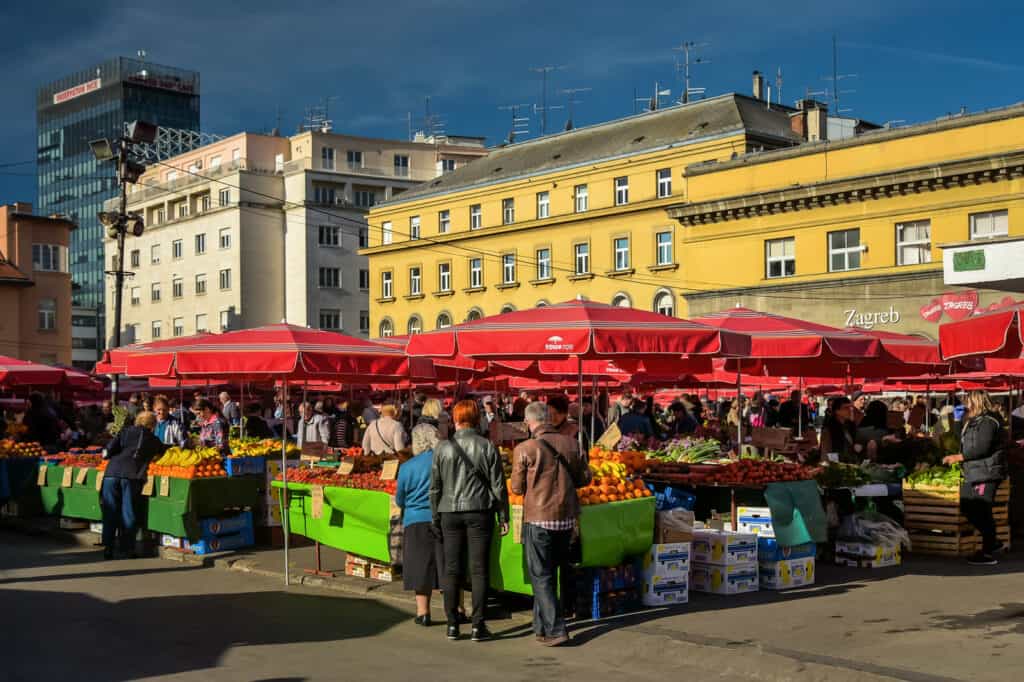
“The stomach of Zagreb.”
Since 1930, the Dolac market has been an integral part of Zagreb’s landscape, and over the years, it has become the city’s primary trading center for farmers from the surrounding villages.
The Dolac market is one of the first things visitors to Zagreb notice when they arrive in the city’s center.
It’s easy to spot thanks to the large, distinctive umbrellas it uses, it’s easy to spot.
Shoppers can chat and sip their coffee while they peruse the shelves of fresh produce and other goods.
To buy fresh food, people still visit Dolac even though numerous supermarkets are nearby.
Seeing Dolac is a unique experience because of the ritual of shopping at your favorite stands.
Fruits, vegetables, and flowers can be found in the upper section, while meat, fish, and dairy products are found in the lower section.
Even if you don’t intend to buy anything, it’s worth strolling through the market to soak up the energy and take in the region’s sights, sounds, and smells.
The Dolac market’s long history has shaped the city of Zagreb for decades, and you can feel the historical sentiment in the air.
Address: 10000, Zagreb, Croatia
Lotrščak Tower (Kula Lotrscak) & Gric Cannon

Is anyone brave enough to scale these shaky steps?
The Lotrščak Tower in Zagreb is one of the city’s oldest structures. The ruins of ancient city walls and forts.
Zagreb’s fortified tower is Lotrak Tower. It was built in 1266 as part of the town’s defenses against the Turks and was part of the southern gate and town defenses.
It is now a Zagreb landmark and one of its last remaining fortifications. However, the Gri cannon has a hidden feature: it fires daily at noon, precisely.
As a commemoration of Zagreb’s victory over the Turks, it has been doing so for the past 100 years. Locals have started setting their watches to the shot as a tradition.
Atop the tower, the city of Zagreb’s defenses were visible for many years. Lat is the name given to the bell. The thief’s bell (campana latrunculorum) sounded every night before the gates closed.
And a bonus is you can also see the city of Zagreb and the surrounding area from the top.
Embrace Zagreb history when visiting the Lotrscak Tower & Gric Cannon.
Address: Tomićeva ul. 9, 10000, Zagreb, Croatia
Lower Town (Donji Grad)
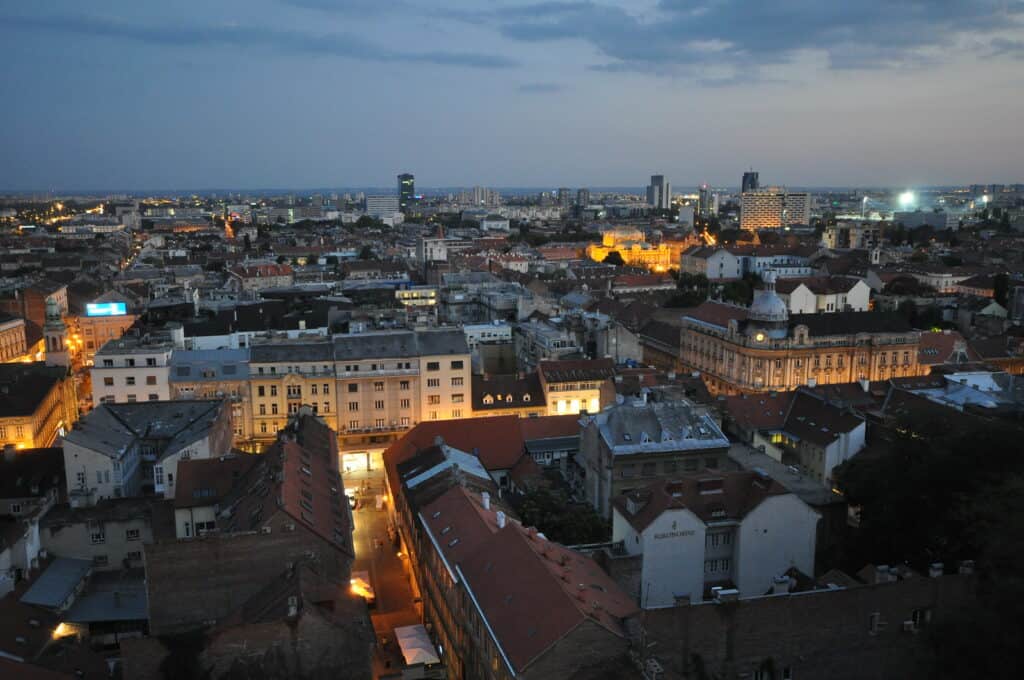
Walk on the Austrian-Hungarian Empire’s broad streets and massive baroque buildings!
It is impossible to visit Zagreb without visiting the Lower Town, both the city’s heart and its most beautiful area.
At the end of the 19th century, it was built below the more famous Upper Town neighborhood.
You can’t help but be captivated by the art nouveau architecture in Lower Town, a great place to stroll around and take it all in.
The buildings and style are similar to those in Lviv, Przemyśl, Brno, Cluj Napoca, Novi Sad, Timișoara, and many other cities in Central Europe, making it easy to feel in these beautiful places.
You’ll find lovely green spaces between the central train station and Trg bana Josipa Jelaia, the most picturesque area of Lower Town.
You will find many shops, cafes, and museums in the Lower Town of Zagreb. Still, the area’s most notable feature is its architecture. This is one of the must-see attractions in Zagreb.
Relax and see the beautiful Lower Town of Zagreb.
Address: Zagreb’s city center
Maksimir Park (Maksimirska)
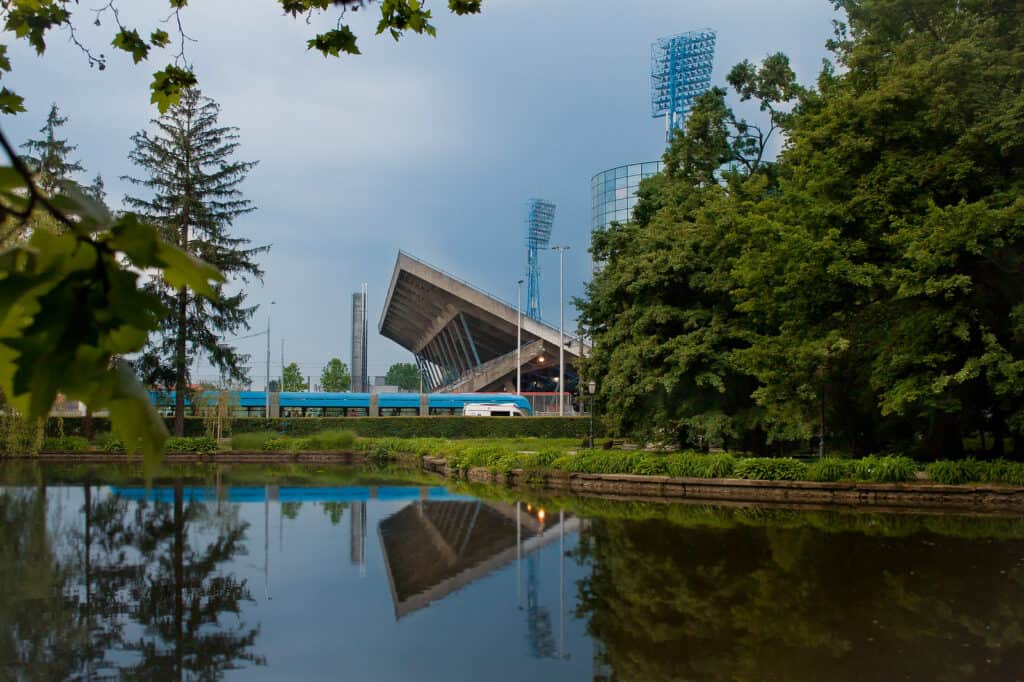
It’s time to pack your lunch and head out for a day of relaxation.
Maksimir Park was South-Eastern Europe’s first large public park, and it predates the establishment of public parks in the majority of the rest of Europe.
The park was redesigned by Bishop Juraj Haulik (1788–1869) and other clergy members.
Biedermeier and romantic neoclassicism with a touch of historicism, and in emulation of the Habsburgs’ Laxenburg estate’s park, Haulik’s vision was very much in line.
Maksimir Park (Maksimirska) is a 45-acre park designed in the style of an old English garden.
Bellevue Pavilion was constructed in 1843 and later supplemented by the Echo Pavilion, inspired by a Swiss design.
The park also has a wide range of recreational opportunities, including a slew of well-maintained paths, trails, man-made lakes, wooded areas, and flower gardens.
A variety of plant and animal species call this park home, including the Middle Spotted Woodpecker (Dendrocopos medius), a species on the verge of extinction in Europe.
There is also a small zoo for those traveling with children.
If you’ve exhausted all of your other choices for things to do in Zagreb, come here and rest for half a day!
Address: Maksimirski perivoj 1, 10000, Zagreb, Croatia
Mirogoj Cemetery
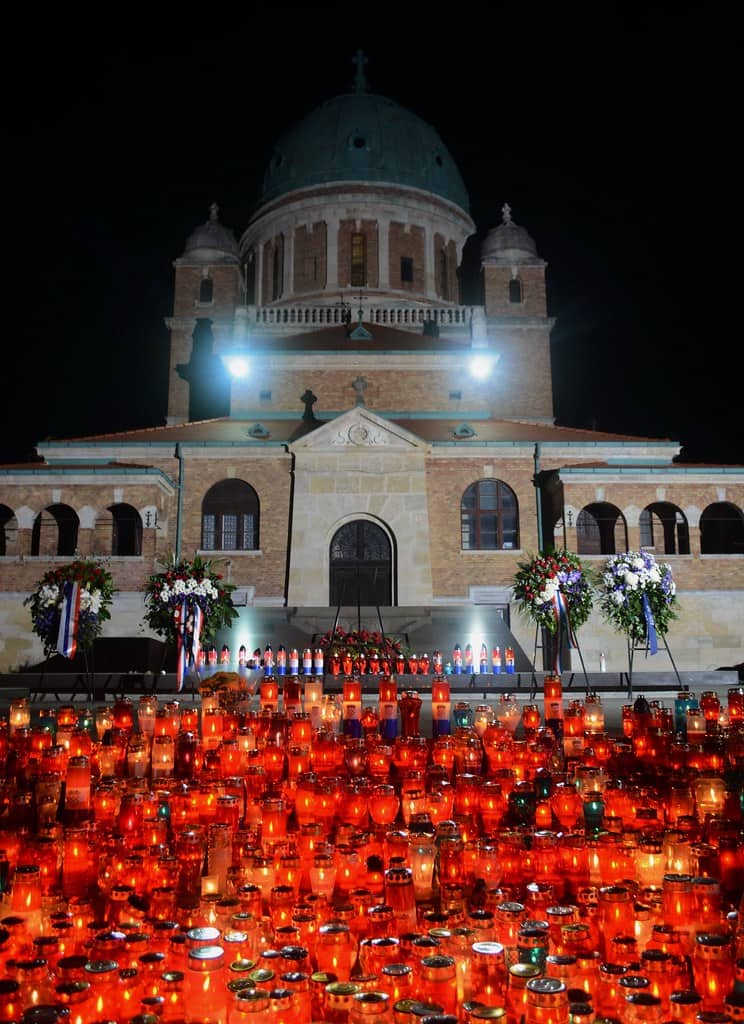
A different kind of art.
In Europe, the Mirogoj cemetery ranks among the most beautiful. It’s a graveyard, but it’s also a lovely park and a public art gallery.
Here is where Ivan Metrovci’s sculptures can be found, as well as many other names come to mind, like Antun Augustini, Dusan Damonja, and Edo Murti.
The cemetery’s 500-meter-long neo-renaissance arcades, each with 20 domes, were designed by Herman Bollé.
He also renovated Zagreb Cathedral and St. Mark’s Church.
In 1879, construction began on the arcades, the domes, and the church located in the entryway. The project was completed in 1929 because of a lack of funding.
Mirogoj was owned by the city, unlike the older cemeteries, which the church owned, and it was open to people of all faiths.
As long as the cemetery is well-kept, it’s fine to visit at any time of year.
Everything is in bloom in the spring, making it a wonderful time of year. However, contrast abounds in the cemetery when the season changes to autumn.
Visit Mirogoj around All Saints’ Day or Remembrance Day if you want to see it at its best (1st November).
Moreover, it is a tradition for locals to decorate their family graves with flowers and candles on this day.
It may not be your usual wander, but why not visit one of the unique attractions?
Address: Aleja Hermanna Bollea 27, 10000, Zagreb, Croatia
Museum of Broken Relationships
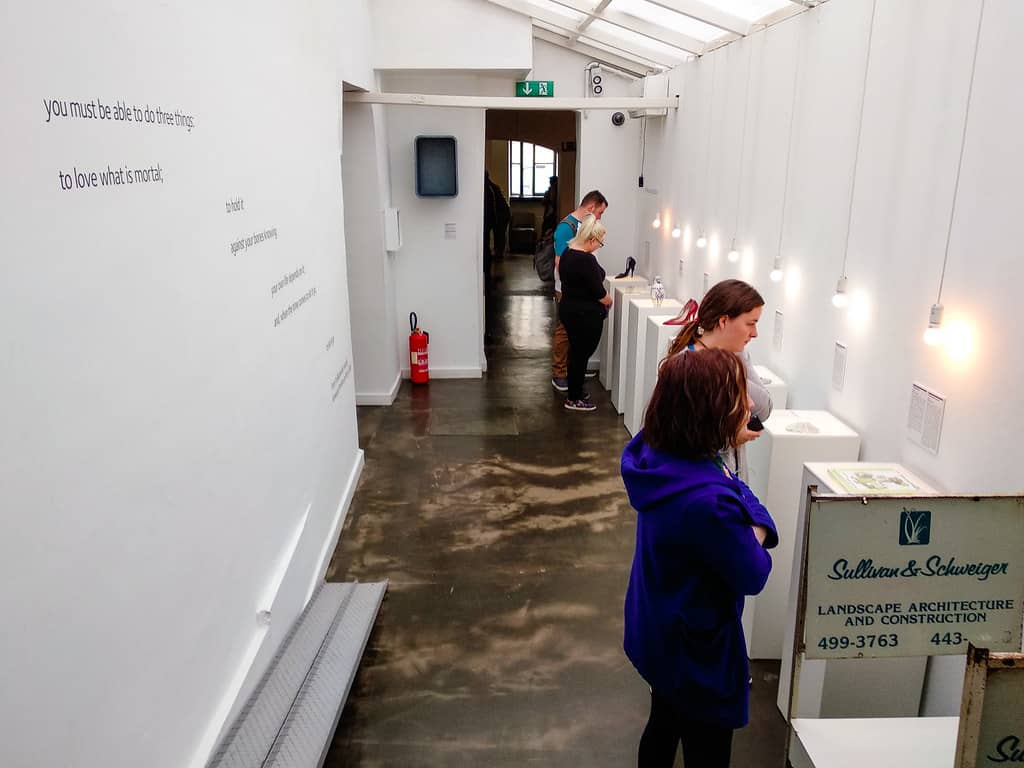
A museum that will give you a roller coaster of emotions!
In 2011 it was awarded the European Museum Kenneth Hudson Award, making it the city’s first privately owned museum.
Located in Zagreb’s Upper Town, in the beautiful baroque Kulmer palace, this is one of the city’s most popular tourist destinations.
The museum, created by Olinka Vitica and Draen Grubii, has traveled around the world, gathering incredible artifacts and raising awareness of Zagreb.
An entire museum dedicated to broken relationships has been established.
Personal items that have been left behind by previous owners, along with their stories and feelings, are on display.
Exhibitions touch on a wide range of feelings and relationships.
Take a moment to think about your personal experiences and how they relate to the displayed items.
It makes you reflect on the importance we place on everyday items.
It’s not about what you’ll find but what you’ll learn.
In the end, it’s all about the incredible feelings and experiences you have while visiting the exhibition!
Seeing a variety of art always makes a place more interesting to visit.
Address: Ćirilometodska ul. 2, 10000, Zagreb, Croatia
Those who follow the crowd usually get lost in it. Create your own path. Take out your map and figure out where you’re going next. Kick off your world travel by checking out our travel guide on the best countries to visit around the world. You can’t see the world without stopping by the United States. Do you want a true American adventure? You have to check out the state to travel in USA.
Museum of Contemporary Art (Muzej suvremene umjetnosti)
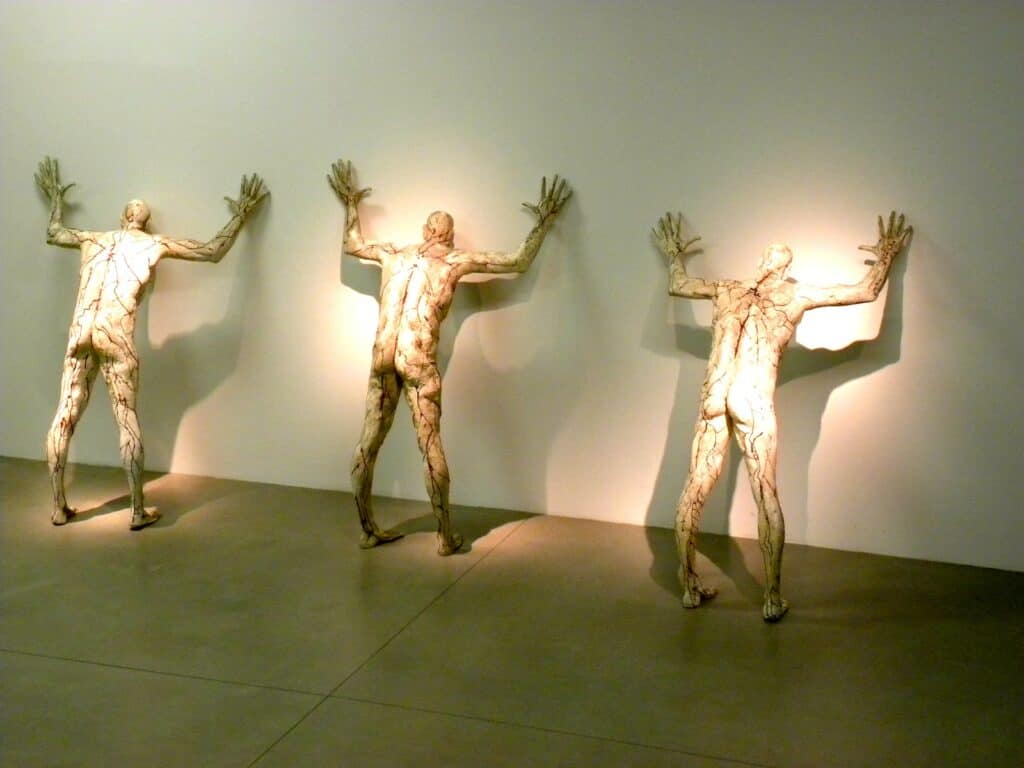
The home of Croatian artists.
The Museum of Contemporary Art is also known by the locals as the Muzej suvremene umjetnosti.
It is one of Zagreb’s newest museums and Croatia’s largest and most modern. It is a place that should not be missed by any art enthusiast!
The museum is, popularly referred to as MSU, was inaugurated in 2009.
Moreover, after the collections have outgrown their original exhibits from their 1950s collection.
This beautifully crafted structure serves as a home for over 12,000 works of art, the majority of which are rotated through over 600 exhibitions each year.
While the emphasis is on Croatian art, visitors seeking to see the artwork of other countries’ artists will not be disappointed, as the exhibition includes artworks and sculptures from all over the world.
English-language tours are provided for any group of tourists.
Furthermore, the museum has a cinema and a shop on-site, as well as a wide variety of workshops and lectures.
Be an artsy tourist when visiting the Museum of Contemporary Arts.
Address: Avenija Dubrovnik 17, 10000, Zagreb, Croatia
Museum of Mimara (Muzej Mimara)
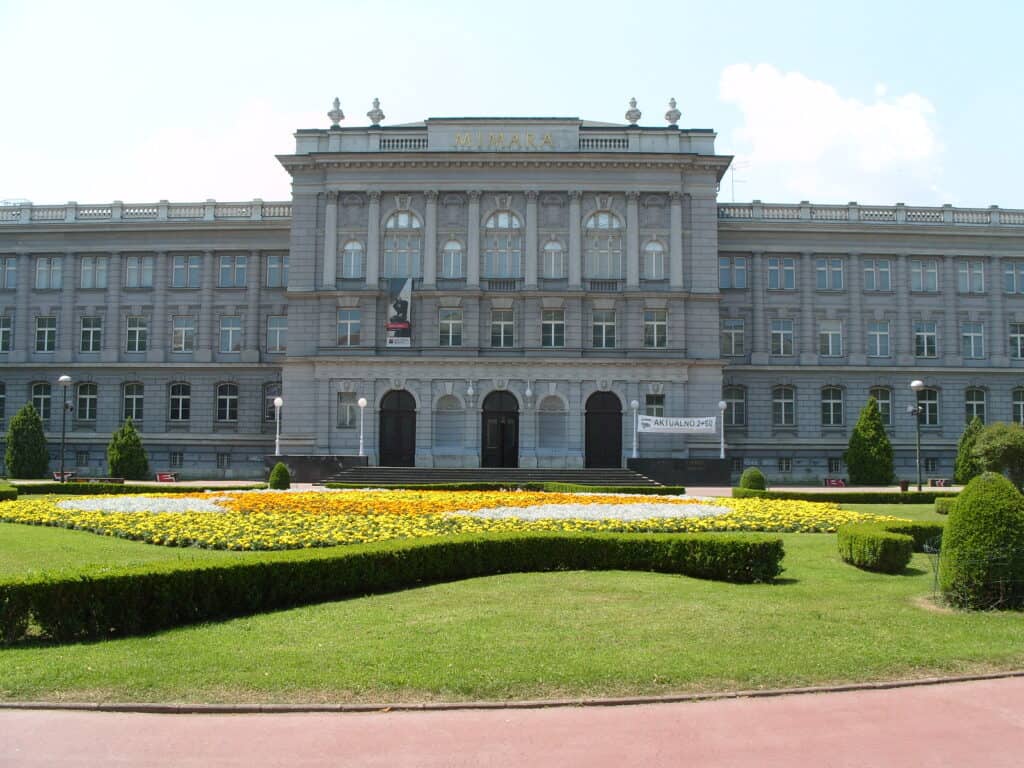
Add this to your list of Croatian Museum Galore!
In 1972, Ante Topic Mimara, a personal collector, donated his collection to the Museum of Mimara (Muzej Mimara).
This extensive collection, housed in a building with Neo-Renaissance style explicitly constructed for it in 1895, includes items from all over the world and throughout time.
As a bonus, there’s a world-class archaeological collection with artifacts from the ancient cultures of the Middle East, Mesopotamia, Egypt, and Persia.
Other noteworthy items include furnishing from the Renaissance and artworks from ancient Greece, as well as a sizeable collection of glassware hailing from many nations in Europe and the Mediterranean.
Paintings by Rembrandt, Ruisdael, Veronese, Rubens, Van Dyck, Goya, and Velázquez are included in the collection.
Degas, Renoir, Delacroix, and Boucher are well-known painters, while Jean-Antoine Houdon and Auguste Rodin are renowned sculptors.
Permanent holdings include more than 1,500 works of art spanning the prehistoric era to the twentieth century out of a total collection of 3,700 pieces.
See it for yourself; arts are waiting for you!
Address: Rooseveltov trg 5, 10000, Zagreb, Croatia
St. Catherine’s Church
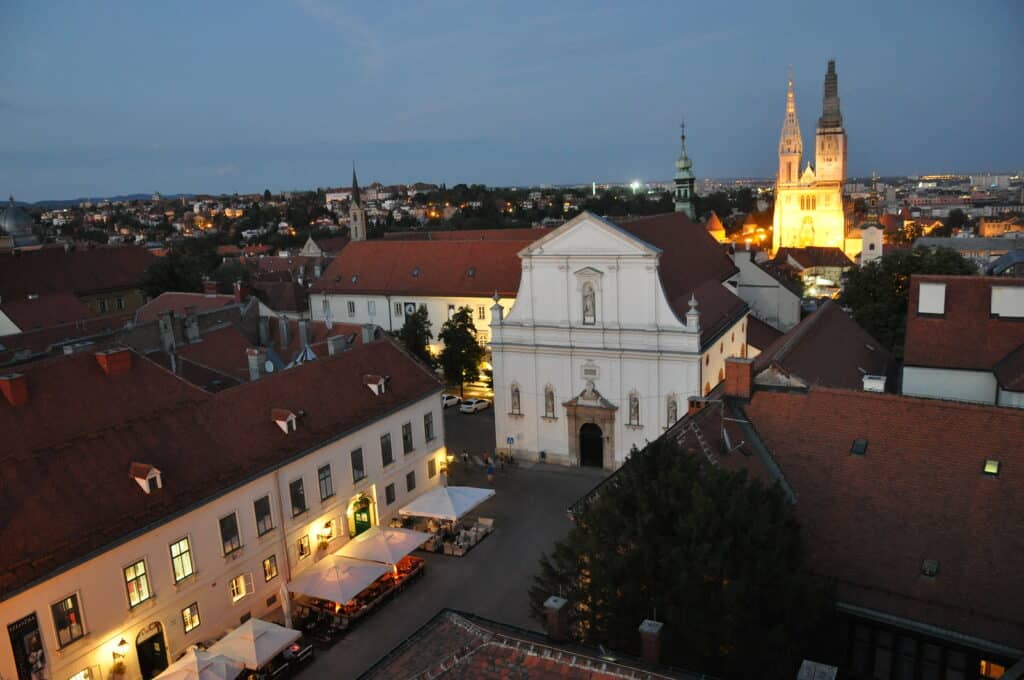
Visit one of Croatia’s most historic churches!
Before the construction of St. Catherine in the 14th century, there was already an existing Dominican church in the area.
When the Jesuits arrived in Zagreb in the early 17th century, they found the original church to be in disrepair and inadequate, so they set about building a new one.
It was completed by the end of 1632 when construction began.
The Klovievi dvori art gallery now occupies the site where a monastery once stood.
Jesuit Church of St. Catherine was built in the early 17th century and is considered one of the city’s finest churches.
In addition to Antonio Quadrio’s 1720s stucco reliefs, the interior of the building is a treasure trove of Baroque masterpieces.
The ceiling of the nave, painted by Giulio Quaglia, features numerous medallions depicting scenes from St. Catherine’s life.
Other notable features include Francesco Robba’s altar of St. Ignatius and the 1762 fresco St. Catherine Among Alexandrine Philosophers and Writers.
Churches are one of the attractions everyone wants to visit in every country.
Address: Katarinin trg bb, 10000, Zagreb, Croatia
Stone Gate, Porta di Pietra – Zagreb Shrine
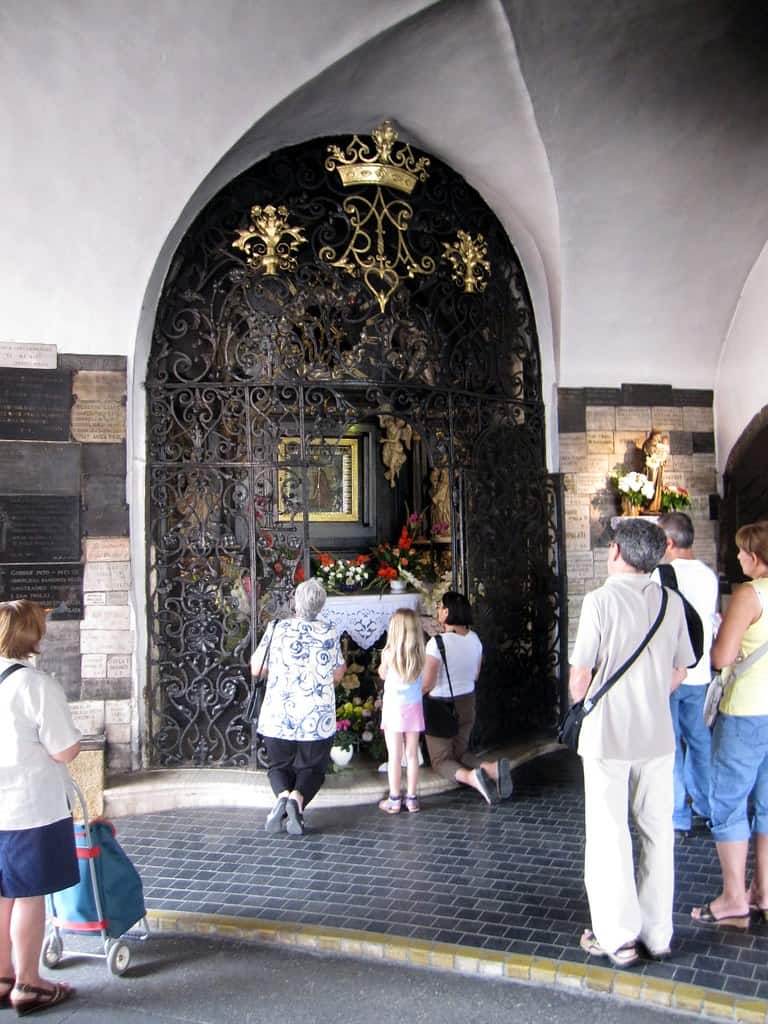
A special shrine in a city.
Old Zagreb fortifications still have one remaining gate, and the Stone Gate is the eastern entrance to the medieval city.
In the 13th century, it was one of four main entrances into the city.
A shrine and stone slabs praise the Virgin Mary inside the gate. The staircase to the Stone Gate holds a mural depicting Jesus Christ’s mother, Mary.
Along with St. Mark’s church, it serves as a living reminder of Zagreb’s forerunner, the free royal Gric city.
When the 17th-century fire was extinguished by an iron fence crafted by hand
People frequently come to the Gate to thank the Lady for her protection and light a candle.
As you go, you’re walking between the upper and lower sections of town. Take a few moments to enjoy the serenity of a candlelit room and a quiet moment of prayer.
On Tuesdays at 8 p.m. local time, the rosary is recited at the stone gate. They sing, pray, and express their desires in song.
The door is always open to everyone, and have a visit to this Shrine!
Address: Kamenita ul., 10000, Zagreb, Croatia
Strossmayer Promenade
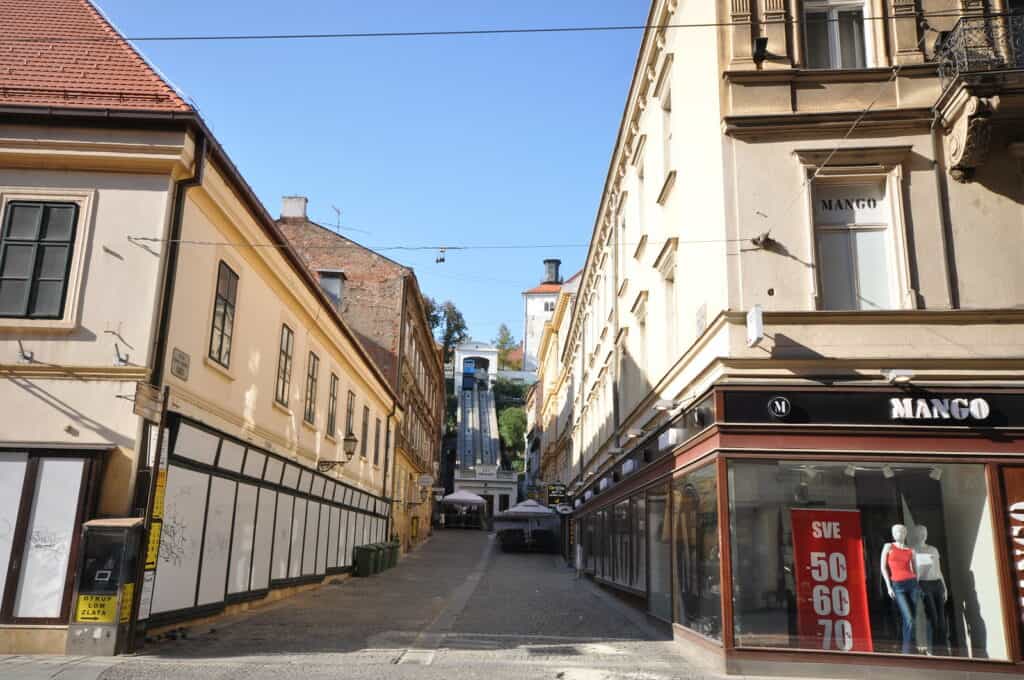
Looking for a romantic and a special place for couples?
Views of Zagreb from the Strossmayer promenade are the best. Zagreb Stross is one of the city’s most romantic promenades.
The Strossmayer promenade offers breathtaking views of Zagreb while helping visitors rediscover the meaning of life.
Through Zagreb’s medieval city walls, it travels along the path of the river Sava. Because of this, Lotrščak Tower, one of Zagreb’s final fortifications, is the starting point.
As you proceed, you’ll come across Croatian poet Anton Gustav Mato, who occupies a bench with a commanding view of Zagreb.
Chestnut trees abound along the lush Strossmayer promenade. In this way, it serves as an excellent entryway on balmy summer nights.
It’s a great place to take a break from exploring the city and take a stroll. Take a seat and enjoy the scenery!
The promenade is bustling with vendors selling food, souvenirs, and other wares during events, and having a glass of fine wine is impossible to resist.
From the 26th of May to the 4th of September, Stross is amidst its 100-day summer.
Those who are always on the lookout for new and exciting places will always reap the rewards!
Address: Strossmayerovo šetalište 16-99, 10000, Zagreb, Croatia
The City Museum (Muzej Grada Zagreba)
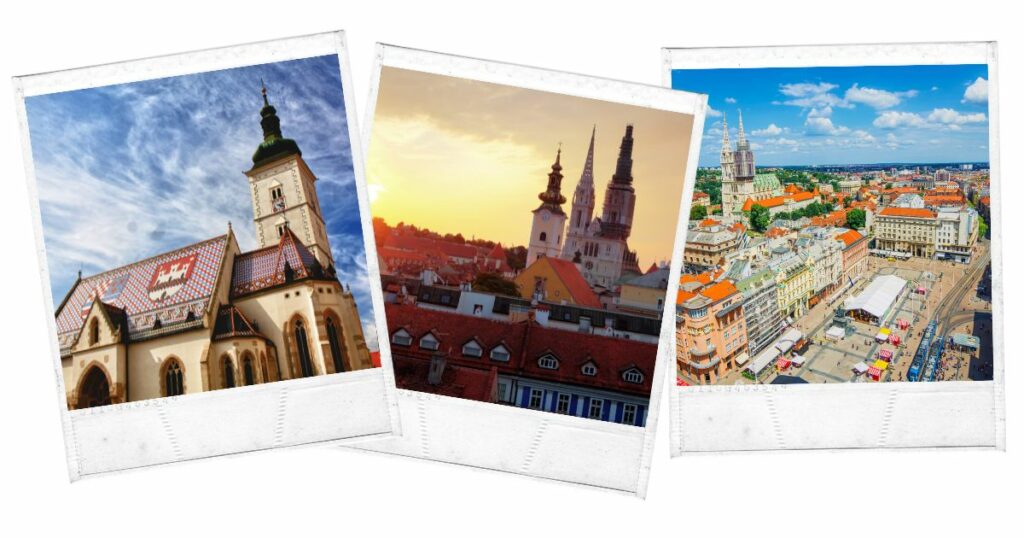
The easier way to understand a place is to visit a museum.
Located in Zagreb’s Upper Town, the City Museum or the Muzej Grada Zagreba includes a medieval tower, the Convent of St. Clair, and a grain storehouse from the 17th century.
It has been operational in 1907 and features 12 separate collections, totaling more than 75,000 individual artifacts, on the eastern side of the town wall.
All the items in the museum’s collections, including a wonderful miniature model at a reasonable scale of Gradec’s old town, help tell the story of Zagreb’s past.
The museum focuses on the city’s cultural, artistic, economic, and political history, spanning prehistoric times to the modern era.
Several works of art, maps, and cityscapes can be found here, as well as furniture, flags, uniforms, and coats of arms.
Interactive exhibits for children are also available at the City Museum, including hands-on workshops and a play area.
One of the must-visit attractions in Zagreb, and it’s just along your way!
Address: Opatička ul. 20, 10000, Zagreb, Croatia
The Modern Gallery (Moderna Galerija)
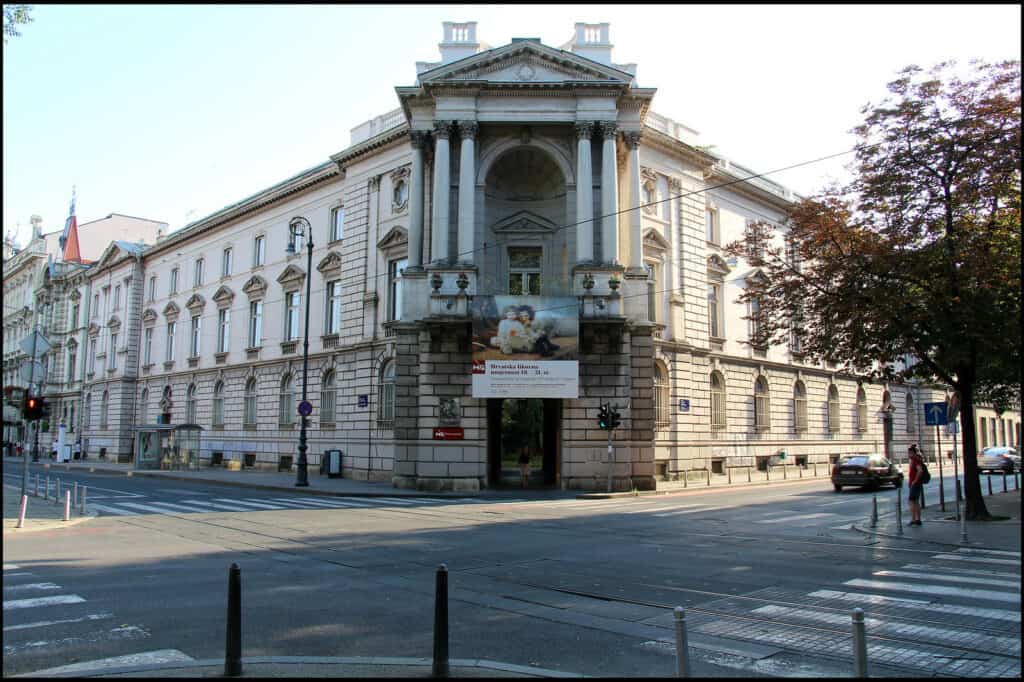
A perfect place to view collections and arts.
Built in 1882, the Vraniczany Palace houses Zagreb’s Gallery of Modern Art (Moderna Galerija), Upper Town.
While the Gallery of Modern Art first opened its doors in 1973, the institution itself dates back to the 1900s, when the gallery began collecting works by Croatian artists like F Bilakm, Ivan Mestrovic, and Mirko Racki.
The number of collections has increased over the years. It now includes works by Miljenko Stancic, Ljubo Babic, M. Masic, Emanuel Vidovic, and V. Karas, among many other famous artists of Croatia.
An idea for a gallery was presented to the Zagreb Art Society in 1899 by Izidor Krnjavi. The Social Exhibitions Statute (Pravilnik for drutvene izlobe) of 1901 recorded his proposal.
To commemorate the Society’s 30th anniversary in the spring of 1905, three works of art were purchased for the Modern Gallery’s future collection.
A complete renovation of the Palace took place from 1993 until 2005, when this current exhibition was first made available to the general public.
It has been transformed into a modern-equipped gallery showing Croatian modern art and sculpture on two palace floors.
Check out different kinds of art by visiting The Modern Gallery.
Address: Andrije Hebranga 1, Zagreb, Croatia
Upper Town (Gornji Grad)
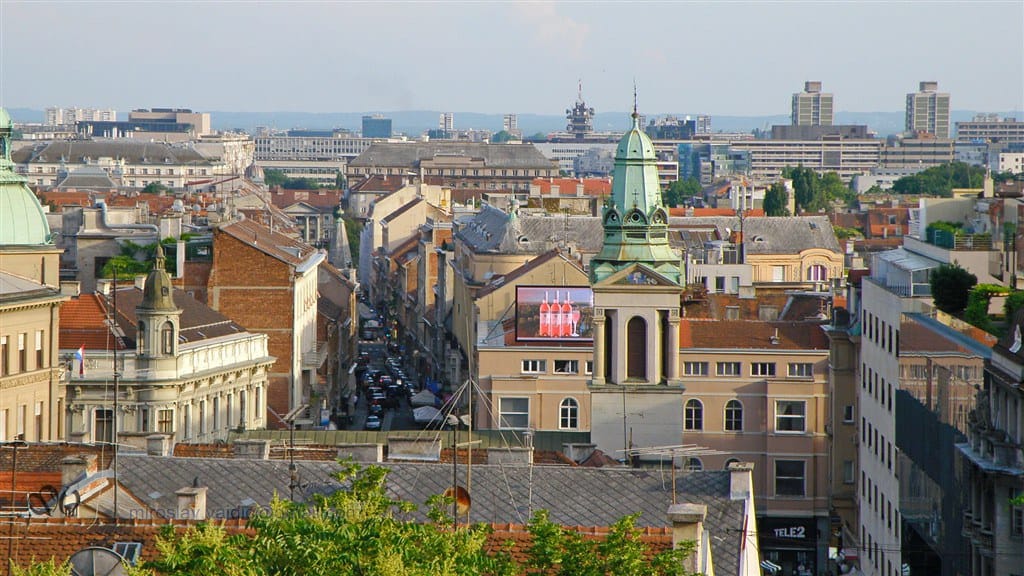
The oldest of the two.
The majority of Zagreb’s attractions can be found in the Upper Town. In contrast to the city’s Lower Town, which dates back to the early 11th century, this is the city’s oldest area, and it’s a world apart.
Cobblestone streets connect the two hills of Kaptol and Gradec in Zagreb’s Upper Town. Examine the most exciting sights, eateries, and bars in Zagreb.
The Upper Town of Zagreb is the city’s oldest neighborhood. A wonderful maze of narrow cobblestone streets and beautiful buildings.
While strolling through Dolac market and Tkalsieva street, you’ll get a sense of everyday life and atmosphere. Visit the nearby attractions, restaurants, bars, and cafes to get a feel for the neighborhood.
Don’t miss out on the city’s best views. A quick walk up or a ride on the funicular will get you there.
The street lighting in Zagreb’s Upper Town are still powered by gas and are manually lighted every night before sunset.
Wander a lot in the Upper Town!
Address: Trg Sv Marka 5, Zagreb, Croatia
Zagreb Botanical Garden (Botanicki Vrt)
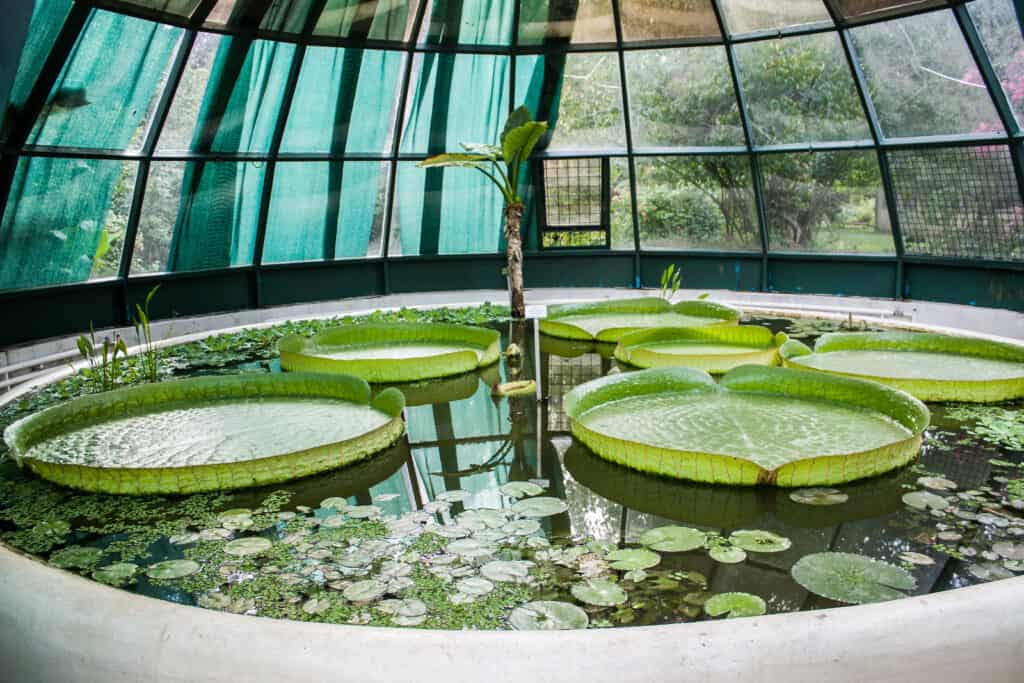
Take in some fresh air while you’re at the city’s heart!
Zagreb University’s Faculty of Botany had initially planned to use the Botanic Garden (Botanicki Vrt) as a research area.
In Donji Grad it’s part of the city’s “Green Horseshoe” of parks, which cover an area of some 50,000 square meters.
A greenhouse, two ponds, an ornamental bridge, and some 10,000 different plant species are on the grounds, making it a wonderful place to relax or take a walk.
Additionally, 14 greenhouses house tropical and subtropical plants in total. Most of the time, the greenhouses are off-limits to the public.
To prevent overcrowding in the greenhouses, only a few people can be present at any one time.
Many plants are removed from the Botanical Gardens in the early spring months. Artificial lakes and pools on the parterre contain marsh plants.
If you still have the energy, visit the nearby Natural History Museum afterward (Hrvatski Prirodoslovni Muzej).
Explore this antique greenhouse, and its enchanting scents will make you fall in love with it!
Address: Marulicev trg 9A, Zagreb, Croatia
Zagreb Cathedral of the Assumption of the Blessed Virgin Mary
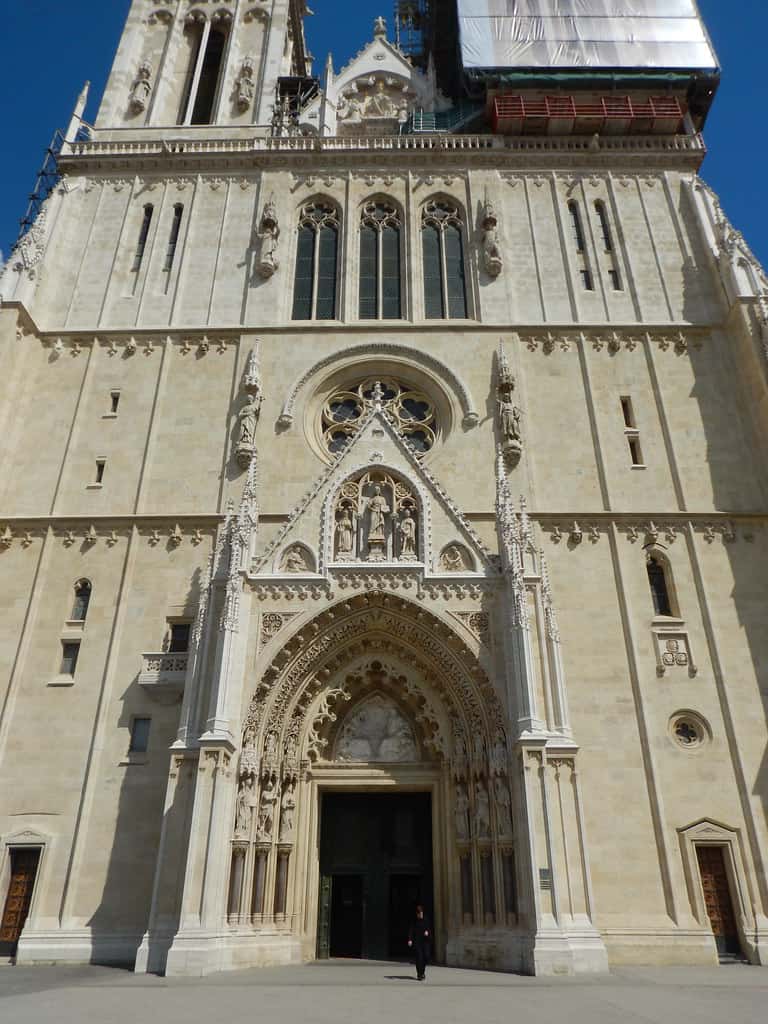
Admire the priceless sacred treasures from the 11th century!
St. Stephen’s Cathedral was the cathedral’s name before it was changed to Zagreb Cathedral.
The Cathedral of Assumption is dedicated to Mary’s Assumption, as well as to the kings of Saints Stephen and Ladislaus, who were martyred for their faith.
Because of its twin 108 meters (354 ft) high spires, the Archbishop’s Palace is the tallest building in Croatia. It looms over the city like a gigantic cloud.
The Zagreb Cathedral and its sacristy, both of great architectural significance, must be seen.
The Ivan Mestrovic-designed baroque marble altars, statues, pulpit, and tomb of Cardinal Alojzije Stepinac are all must-sees while you’re there.
In 1994, Pope John Paul II celebrated the 900th anniversary of the Archbishopric of Zagreb by conducting a Holy Mass at the Cathedral during the celebrations.
The Zagreb Cathedral Organ, one of the world’s top ten most delicate instruments, is also housed there.
Also, the organ has been registered as a protected cultural good by the Ministry of Culture of the Republic of Croatia.
An old church with a long history and one of the most delicate organs will surely make you visit the Zagreb Cathedral!
Address: 10000, Zagreb, Croatia
Zagreb Funicular
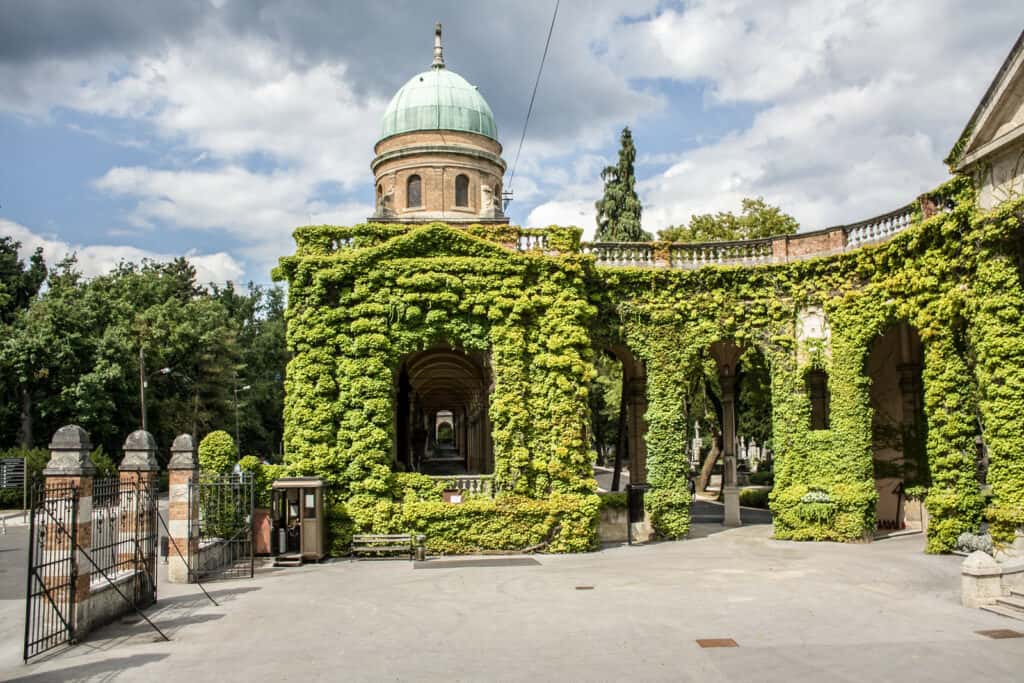
It’s common for places to boast about their tallest, biggest, or grandest. Zagreb? They’re famous for having the world’s shortest funicular railway!
Between Upper and Lower Town, Zagreb’s funicular runs a distance of 66 meters in exactly 64 seconds, making it one of the world’s shortest funicular rides.
The funicular was inaugurated in Zagreb in 1890, a year before the horse-drawn trams were introduced in the capital.
However, other public transportation tickets can also be used for the 4 kuna ticket.
Stairs are available if you don’t want to ride the funicular but want to see its original construction.
St. Mark’s Church, the Museum of Broken Relationships, the Naive Art Museum, and some excellent restaurants can all be found in Zagreb’s old town, Gornji Grad or Gri.
From the funicular station, you can see all of Zagreb’s rooftops, as well as Novi Zagreb.
Why use stairs if you can have the experience of riding the shortest funicular rides in the world? You can never buy experience!
Address: Tomićeva Street
Zrinjevac Park
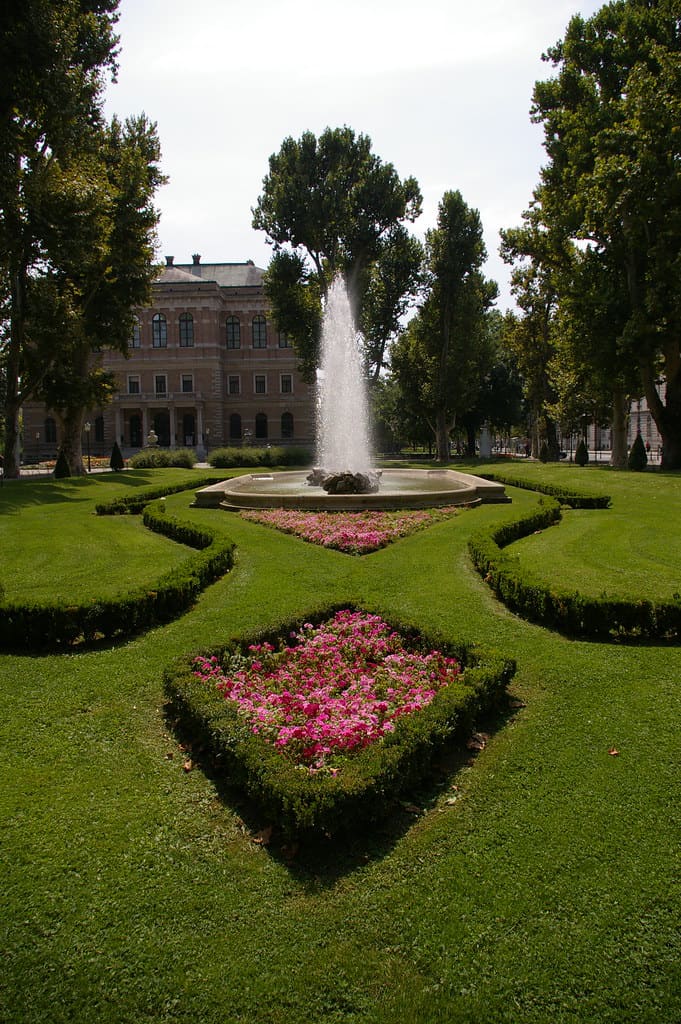
A place where you deserve to relax
Zagreb’s Zrinjevac Park is one of the city’s most romantic spots. The park offers a tranquil respite from the hectic pace of the city.
The Lenuci horseshoe includes Zrinjevac Park. Ban Jelai Square is located to the south. Just a few steps away.
Zagreb’s rich history can be relived in the park. Open-air concerts take place in front of the 19th-century Music Pavilion, which serves as the park’s focal point.
There are several fountains, a weather station dating back to the 1800s, and statues of Croatian legends like Julije Klovi, Andrija Meduli, Fran Krsto Frankopan, Nikola Jurii, and Ivan Maurani.
Zagreb’s first fountain can be found in the park. The “Mushroom” fountain was built in 1878 and designed by Herman Bollé.
In particular, Zrinjevac has become a popular meeting place for everyone is noteworthy.
The park has a wide variety of food and drink stands since it frequently hosts art projects, concerts, and other special events.
Have time to relax and visit the park, not just for romance but to wander and be in an awesome place at the same time!
Do you need any more convincing that Zagreb, Croatia is worth a visit? Visit reasons to visit Zagreb, Croatia, at least once in your lifetime here.
Address: Zrinjevac 7, 10000, Zagreb, Croatia

